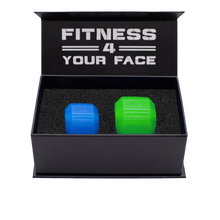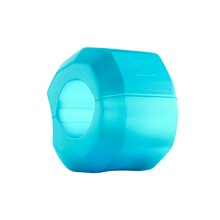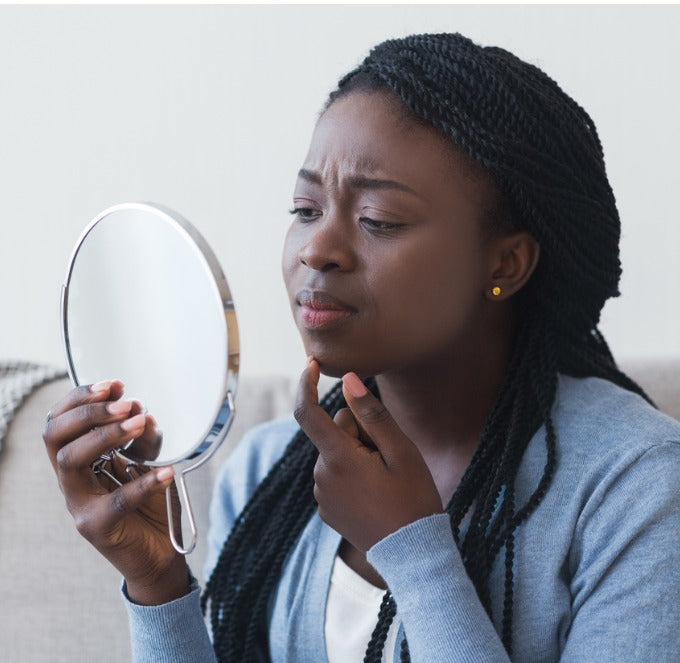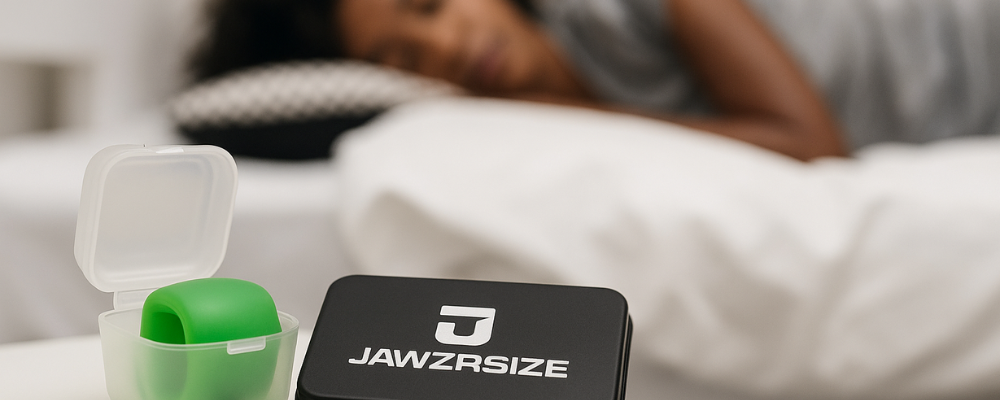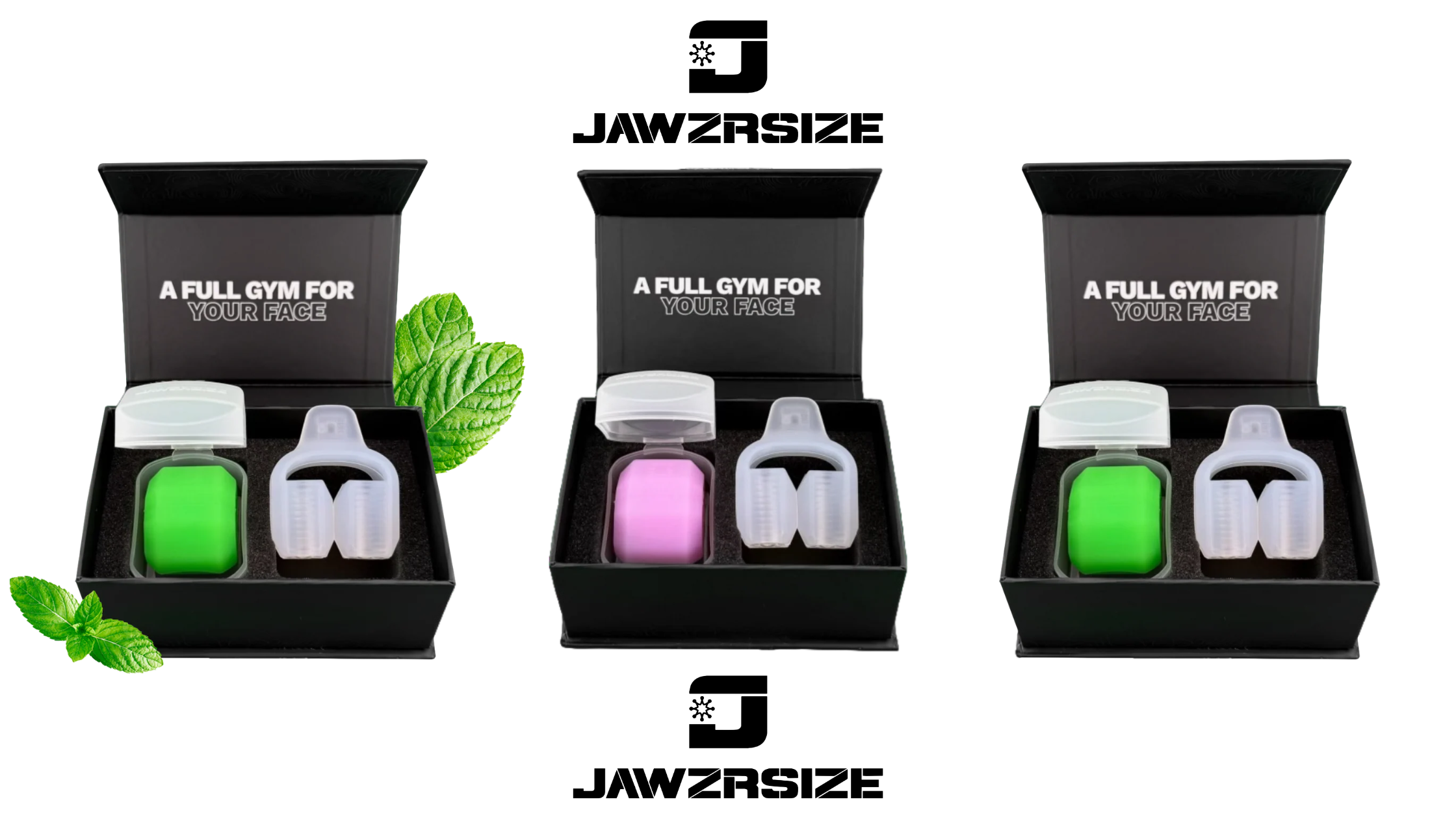What is a receding chin? How can it be fixed? The benefits of having a strong, defined chin and jawline have been well-documented, but not all of us are blessed with these genetics at birth. A receding chin, otherwise known as retrogenia, occurs when your chin appears slightly sunken into the rest of your face. The upper jaw can frequently present in front of a receding chin, giving the impression of an overbite. Many people are quite self-conscious of this, even if it doesn’t affect their health or eating habits.
If you have a receding chin, keep reading as we’ll give you the tools you need to fix it without costly surgeries or expensive equipment.
What Causes a Receding Chin?
A receding chin occurs when the chin slopes backwards or is too short or small in relation to the rest of the face. The chin is part of an area of the lower jaw known as the anterior mandible, typically in front of the lower lip. A receding chin means the chin ends before the lower lip.
Genetics is the usual culprit of a receding chin. The way your mother and father look will obviously impact your own face, but chin size and placement can often be a recessive trait that presents itself in people with parents who don’t have a receding chin.
Tooth formation and puberty can also affect chin placement or a weak chin. An overbite, often exacerbated by teeth growing incorrectly in the mouth, can quickly evolve into a receding chin.
Additionally, retrogenia can result from some congenital conditions such as the Pierre Robins sequence and Treacher Collins syndrome. These mostly affect infants, and their condition typically improves as the jaw size grows over time. Congenital causes typically can’t be addressed with physical exercise and must be treated with surgery.
How to Fix a Receding Chin Without Surgery
A receding chin can be improved with surgery including implants or a sliding genioplasty, but both of these are invasive and costly procedures, often not covered by medical insurance as they are cosmetic.
If a receding chin results from an overbite caused by tooth growth and puberty, braces can also fix it. By correcting the placement of teeth in the mouth, the anterior mandible can move back in line with the upper jaw.
However, braces can’t always address a receding chin, and you can fix the condition without surgery. Using Jawzrsize, you can begin to correct the contours of your chin without spending thousands on expensive operations.
Exercises for Receding Chin
Fitness isn’t just for your body; your face contains many important muscles which can be strengthened to improve the appearance of your chin and jaw. Using a device like Jawzrsize can help you stimulate muscles that often go unused in daily life that typical fitness routines rarely include.
By strengthening your face and neck muscles, your chin naturally moves into a suitable alignment with your upper jaw. While genetics plays a large role in this placement, regular exercise can challenge the hand we’re dealt at birth.
Exercises focusing on your face and neck can dramatically improve the placement of a receding chin. While they may not work for everyone, they’re worth a shot before diving into expensive surgeries and procedures.
Jawzrsize Exercises
Jawzrsize is a simple way to deal with a receding chin. Anyone can follow the instructions to incorporate the Jawzrsize into their daily routine
Simply chew on the device for a set period of time. Perform 3-4 sets of 15-30 reps per day at the start, scaling up depending on your comfort and goals. To use the product to its fullest extent, you should commit to using it consistently.
The Jawzrsize works by addressing the muscles in the jaw and neck, which dramatically impact the placement of your chin.
Face Yoga
Aside from Jawzrsize, there are other exercises that can help with a receding chin. There are 42 muscles in your face alone, and they rarely get as much exercise as they need. Face yoga is a way to stretch and strengthen these muscles, with a chance of improving your chin’s position in the process.
Mewing
Mewing is a new trend that has set the internet on fire. However, it isn’t a recent discovery and has been around since as early as 1981. Named after Dr. John Mew, mewing is a facial reconstruction technique that you can do at home.
The technique requires you to push your tongue to the roof of your mouth while at the same time touching your upper and lower molars and keeping your lips sealed. It sounds like a lot, but it’s actually quite simple. It’s essentially loosely clenching your teeth without doing damage by grinding them.
Many people have seen positive results from mewing. Often, they find themselves doing it unconsciously, with their jawline dramatically improving the more they do it. However, there is no hard evidence of the benefits of mewing, just anecdotal support.
Use Jawzrsize for Your Receding Chin Today
If you’re self-conscious of a receding chin and are seeking solutions, you may be hesitant to opt for surgery immediately. Using the Jawzrsize can help you reach your goals, enhancing your jaw and neck strength in the process.
By incorporating the Jawzrsize into your daily routine, you’ll notice a marked improvement in your jaw strength and chin position. While tending to any underlying dental conditions is a must, addressing your chin challenges with exercises is a simple way to create the chin and jawline you want.

